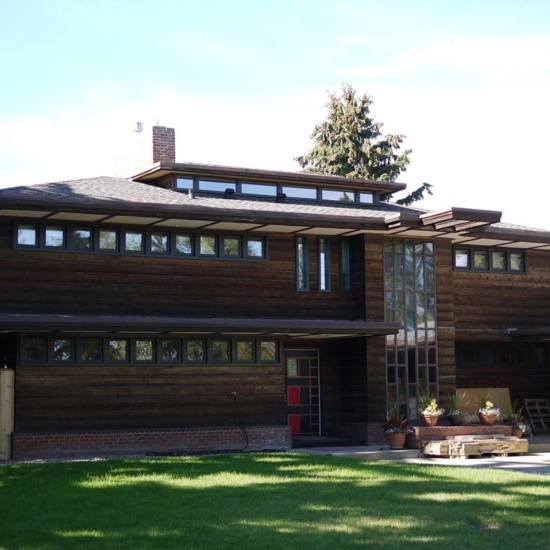Windsor Park
Although subdivided in 1911 for development, most residences of Windsor Park were not built until the 1940s and 1950s.
Although subdivided in 1911 for development, most residences of Windsor Park were not built until the 1940s and 1950s.
Bound on the north and west by the North Saskatchewan River, the location of what is now Windsor Park was surveyed in 1882 as River Lot 3. Its neighbour to the east, River Lot 5, became the University of Alberta. The original title was held by Allan Omand. By 1910 it was owned by John McFadden. He sold his estate to Magrath, Hart, & Company (later Magrath & Holgate) who, in turn, subdivided the land and resold it to investors in England making “several hundred percent” in return as a 1911 article in the Edmonton Journal reported. It was heady times in the area’s real estate boom prior to the First World War. Unfortunately for these British investors and local speculative buyers, the boom collapsed in 1913 leaving many lots unsold and the area virtually undeveloped until after the Second World War. Further complicating the growth of the community were numerous caveats placed on the properties going back to early expectations that this neighbourhood would be a high-class residential neighbourhood with dwellings of a minimum high standard. When the city re-subdivided Windsor Park and Edmonton’s first town planner, Nöel Dant, designed the community in 1951, many of these restrictions were still in place; in one case, one property had 26 caveats against it. Alberta’s Supreme Court had to intervene to remove these mostly outdated restrictions. For example, one caveat read “the stable must be built on the back fifty feet of the lot”.
In 1930 there were only nine homes built in Windsor Park and the area still resembled a mostly rural setting. Nothing was paved and there were no sidewalks, streetlights, or bus service. Residents alighting from the streetcar at the south end of the High Level Bridge had to walk across campus into the neighbourhood on unpaved trails. Dant’s 1951 neighbourhood design brought many new residents into the community, but by routing traffic around rather than through the community, Dant’s plan maintained Windsor Park’s secluded feel and unique contours of properties in line with the river bank. The central park area set aside by Dant was designed in a manner that recalled an English country garden by Robert Falconer Duke, City Architect at the time. Some developments were campaigned against by Windsor Park residents, like the University of Alberta stadium that once stood along 116 Street and the increased number of multi-suite residences, but the 1955 Groat Road Bridge was mostly welcomed as it increased their access to Edmonton north of the river.
Details
Sub Division Date
TBA
